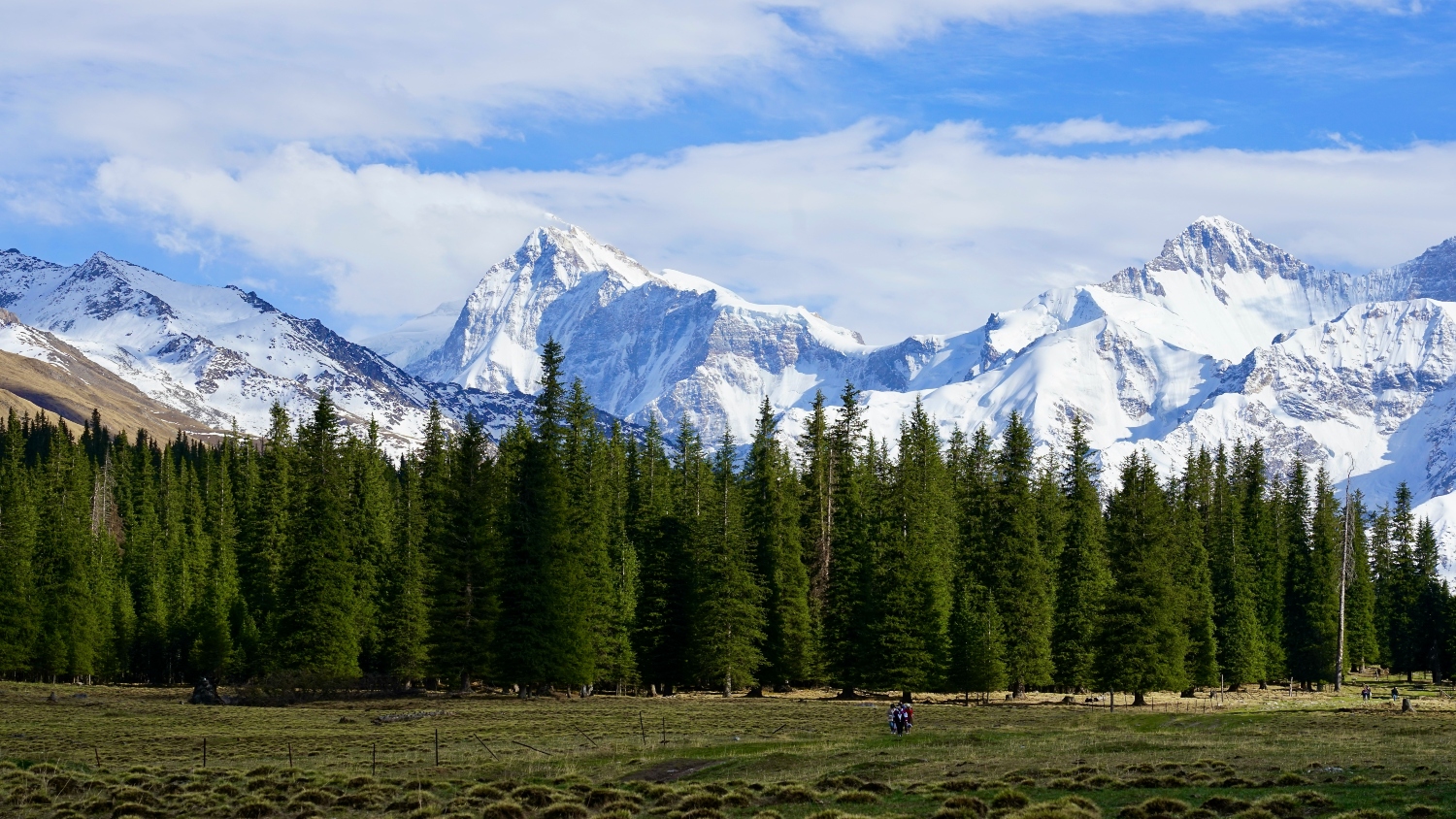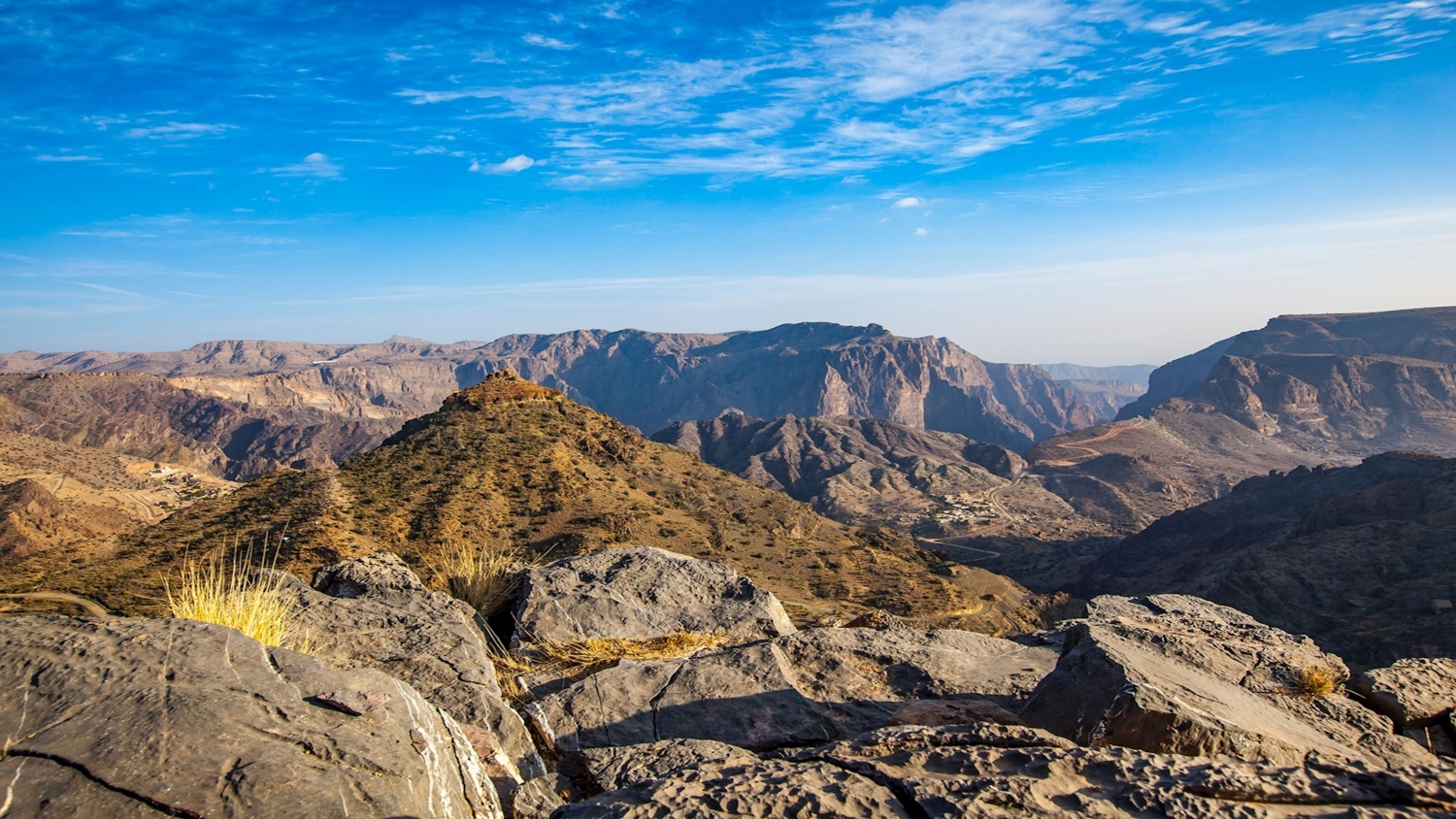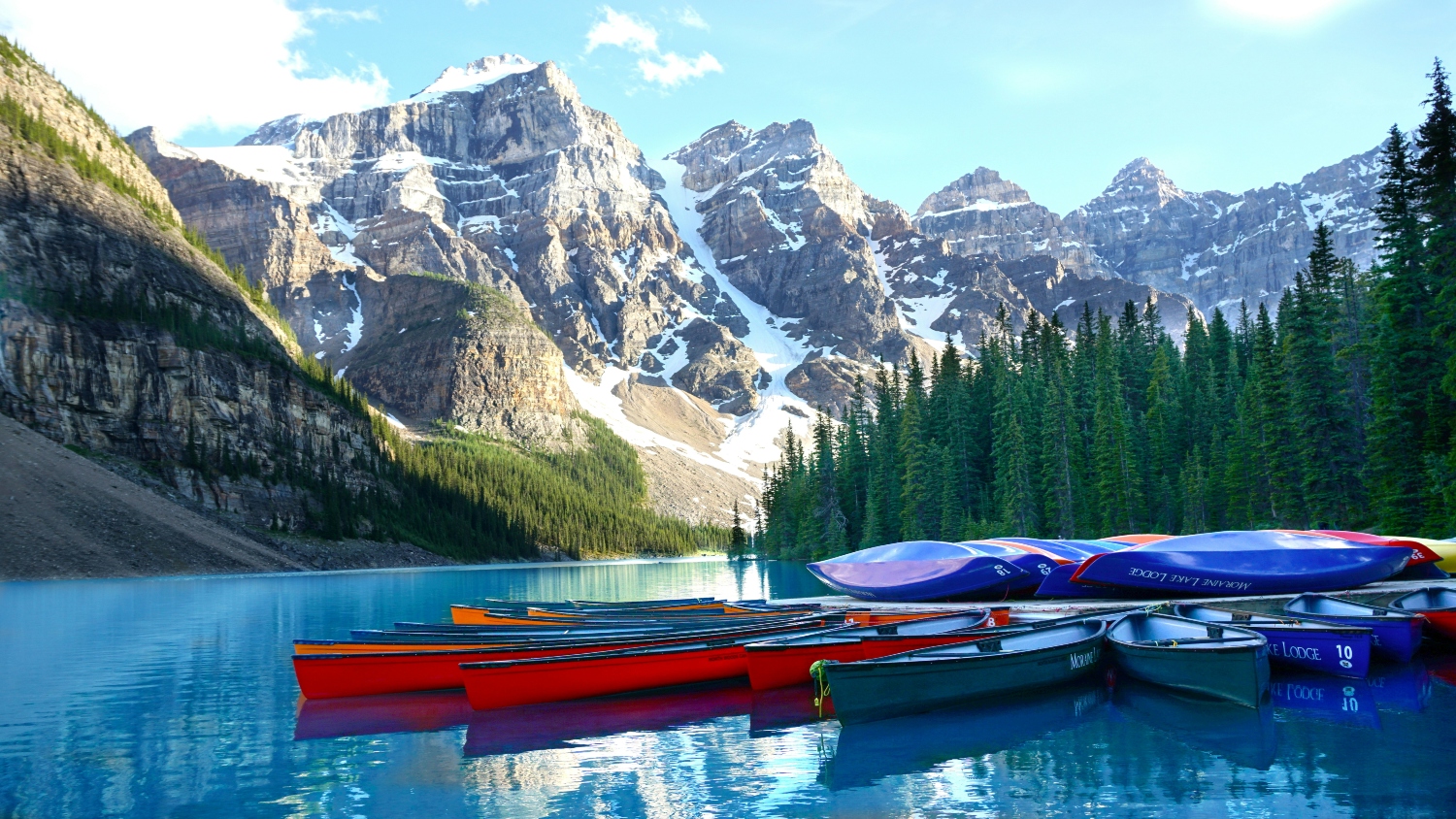When it comes to majestic peaks and cinematic alpine views, Switzerland tends to dominate every traveller’s imagination. Switzerland may set the gold standard for alpine beauty, but the world is dotted with other mountain landscapes just as spellbinding, from jade valleys in China to volcanic silhouettes rising over Japanese lakes. Whether you’re chasing artful silence or a slow, high-altitude escape, these eight breathtaking destinations redefine what it means to stand at the top of the world.

Xinjiang, China
In China’s far northwest, Xinjiang unfolds like an epic painting come to life in blues and golds. The Tianshan Mountains carve their way through vast steppe plains, hiding crystalline lakes in Kanas and Sayram that mirror the clouds above. Spring brings wildflowers across the grasslands, while autumn dyes the valleys amber and crimson. Beyond its beauty, Xinjiang feels unfiltered, untouched, and grand in a way that humbles you.

Jebel Akhdar, Oman
Translating to “Green Mountain”, Jebel Akhdar surprises with its fertility amid the desert. High-altitude terraces bloom with roses, pomegranates, and apricots, while deep canyons cut through its heart. Visitors can hike to abandoned cliffside villages, wander along ancient irrigation channels called falaj, or simply watch the landscape shift from burnt ochre to soft lavender at dusk. It’s a mountain that reveals its drama slowly through scent, silence, and light.

Banff, Canada
Banff feels undeniably cinematic from every angle. The Canadian Rockies rise like icy fortresses above turquoise lakes, each one more reflective than the last, including Moraine, Louise, and Minnewanka. In summer, kayaking across their glassy surfaces is almost meditative, and in winter, the entire place transforms into a silent cathedral of snow and pine. Wildlife roams freely here, reminding you that in Banff, nature always leads the conversation.

Dolomites, Italy
Few landscapes shift moods like the Dolomites. At sunrise, the limestone peaks glow soft pink; by dusk, they blaze with fiery amber light. A UNESCO World Heritage Site, this range is as much about stillness as it is a spectacle. Wander through meadows stitched with wildflowers, cycle along scenic mountain passes, or take a leisurely cable car ride to panoramic viewpoints where nature seems sculpted by design.

The Drakensberg, South Africa
In South Africa‘s Drakensberg Mountains, the horizon is a living thing that’s jagged, fluid, and constantly changing with the light. Waterfalls tumble from basalt cliffs, and trails weave through ancient San rock art sites hidden within the valleys. It’s a place that encourages slow discovery: sunrise walks through misty hills, or evenings spent watching the clouds roll in like waves over the escarpment.

Patagonia, Chile
Patagonia feels like another planet with its vast frontier of wind, silence, and sculpted stone. The Torres del Paine National Park is its crown jewel, where sharp granite peaks pierce the sky above milky-blue glacial lakes. Horseback rides, glacier treks, and quiet shoreline walks are some of the different ways to experience its wilderness, but perhaps the greatest reward is the sense of solitude you get – the rare luxury of feeling completely small in the face of nature’s immensity.

The Japanese Alps, Japan
Japan’s Alps delivers a sense of calm to the idea of mountain travel. In winter, the region’s onsen towns turn into snowy sanctuaries, where steaming hot springs meet powder-dusted forests. Come summer, lush valleys and mirrored lakes invite quiet exploration, from hiking the trails of Kamikōchi to strolling through cedar groves near Takayama. The balance of rugged landscapes and gentle order makes these mountains uniquely Japanese, serene, refined, and quietly powerful.

The Atlas Mountains, Morocco
Just beyond Marrakech’s bustle, the Atlas Mountains rise in serene defiance. Villages built from red clay cling to the slopes, while the scent of juniper and thyme drifts through the crisp air. Trekking paths wind past walnut groves and ancient kasbahs, revealing views that stretch from snow-capped peaks to the sands of the Sahara. Here, every ascent feels like a journey through both landscape and time.
Featured image: Andrew Spencer









